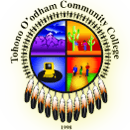Course Terminology
S-ke:g Taṣ! Welcome to Assessment of Student Learning Course Terminology
Course Terminology
Prefix: Short way to identify the area of study or discipline: ART for Art; GEO for Geography, BIO for Biology, and so on.
Course number: Number used to identify specific classes: ART 100 is Basic Design, GEO 103 is Cultural Geography, and so on. Classes numbered 200 or above are more advanced than 100 level classes.
Title: Name of the course: Basic Design, Understanding Terrorism, Global Change Biology, and so on.
Credits: Shows semester hour credits for a course. HIS 122 Tohono O’odham History and Culture is 3 cr. hrs. (3 credits) while BIO 100N Biology Concepts is 4 cr. hrs. (4 credits). Most classes are 3 credits.
Lecture and lab hours: Lecture hours are shown as, for example, 3 lec (3 lecture) or 5 lec (5 lecture); lab hours are shown as, for example, 3 lab (3 laboratory). Some classes are lecture only; some have a combination of lecture and lab hours. Periods (pds) are the sum of lecture plus lab hours: (6 pds: 3 lec, 3 lab), for example.
Prerequisites: Prerequisites are courses or other preparation required for enrollment in a course. Some courses have no prerequisites while others may have one or more. WRT 102 has WRT 101 as a prerequisite, for example.
Course Description: The text or narrative that is designed to highlight the main course contents.
Student Learning Outcomes (SLOs): Measurable statements of what students should know and be able to do as a result of their course work. SLOs can be found in the student’s course syllabus.
Assessment of Student Learning: At the course level, assessment provides important data on the breadth and depth of student learning. Assessment is more than grading. It’s about measuring the progress of student learning. Thus, assessment is defined as a “process of gathering data to better understand the strengths and weaknesses of student learning” (Harris & Hodges, 1995).

